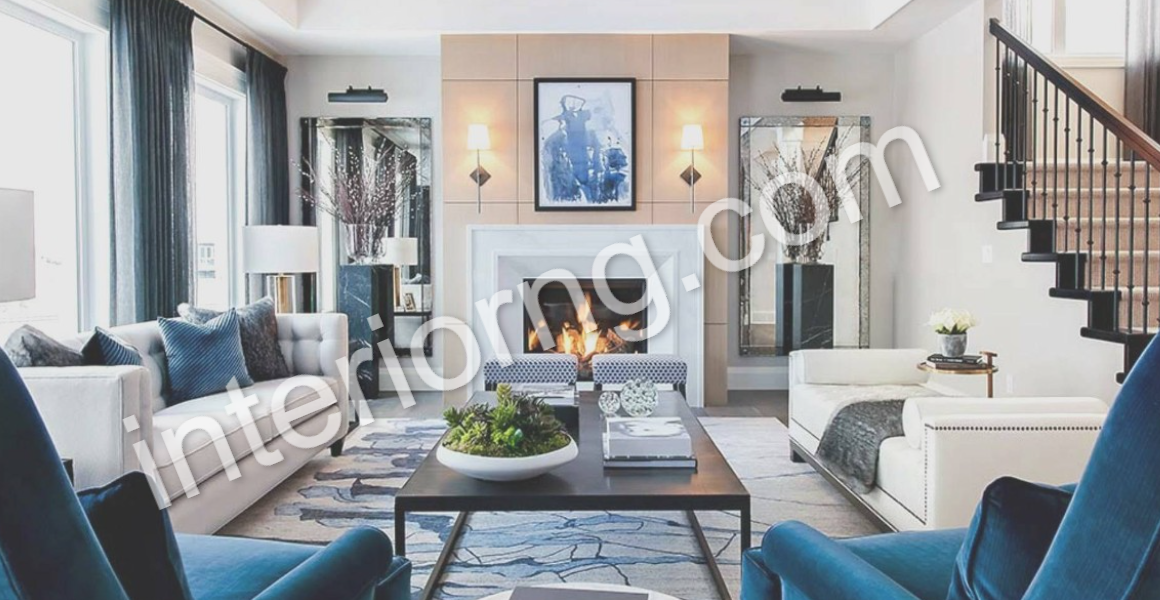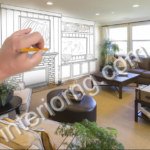Europe Style Interior Design- The past of fine art, architecture, and cultural heritage in Europe is illustrious. The fact that European interior design is one of the most well-known and recognizable worldwide trends shouldn’t come as any surprise.
The European aesthetic for interior design combines conventional elegance with modern utility to create a cozy, hospitable, and stylish living environment. This style has a classic appeal, making it a great choice for homeowners trying to make their houses feel stylish and welcoming.
A few of the European countries that have impacted European interior design include France, Italy, England, and Spain. The aesthetic of interior design captures the distinguishing qualities unique to each location.
SEE ALSO: Interior Design with Black and White: The Timeless Elegance of Black and White in Interior Design
Characteristics of European Home architecture
- Classic Elegance
The traditional elements like brass, marble, and wood that are used in European interior design are known for their timeless beauty. The majority of the furniture is made of thick wood, giving it a timeless and timeless appearance. This style frequently uses lavish fabrics with ornate patterns and textures.
- Neutral Colors
Neutral colors are frequently used in European home architecture. These colors include taupe, creamy, gray, and white. These colors assist in creating a calm and peaceful atmosphere, which is essential for sleeping.
- Ornate details
Ornate details are another characteristic of European interior architecture. This design features ornate lighting fixtures, decorative moldings, and carvings. The region has a refined feel thanks to these small details.
- Vintage Touches
Vintage accents, like antique furnishings, vintage rugs, and antique accessories, are frequently used in European interior design. These retro accents give the room a feeling of history and nostalgia.
- Natural Materials
In European interior design, natural elements like wood, stone, and natural fibers are frequently used. These elements add a feeling of nature to the home and help create a cozy and welcoming atmosphere.
- Artistic Accents
In European interior design, artistic elements like paintings, sculptures, and tapestries are also common. These details give the room a creative and artistic flair that contributes to its special and individual atmosphere.
Let’s examine some of the ways you can incorporate this design approach into your home after going over the fundamental components of the European interior design style.
- Use basic colors.
The first stage in creating a European interior design aesthetic is to use neutral colors. These colors will help create a relaxing and cozy ambiance in your home. You can design your home with beige, ivory, gray, and white hues for your walls, floors, and furniture.
- Incorporate Natural Materials
Stone, wood, and other organic elements, as well as natural fibers, are essential components of a European interior design strategy. These materials can be used in your home’s flooring, furnishings, and accessories. Think about using natural textile rugs, wooden furniture, and a stone floor.
- Add vintage touches
Antique furniture and vintage rugs are just two examples of vintage accents that give a room a feeling of history and nostalgia. At flea markets, antique shops, and internet marketplaces, you can discover vintage items. Your house will gain personality and charm from these items.
- Use Ornate details
Ornate features give the room a feeling of sophistication, like decorative moldings and detailed carvings. These accents can be used on your furnishings, walls, and ceilings. To add a sense of grandeur, you can also use elaborate lighting devices like chandeliers and sconces.
- Use Luxurious Fabrics
In European interior design, Luxurious Fabrics like silk, satin, and brocade are frequently used. These materials can be used for your curtains, decorative cushions, and furniture upholstery.
- Add Artistic Accents
Paintings, sculptures, and tapestries are examples of artistic accents that give a room a feeling of creativity and artistry. These accents can be used to add color or to establish a focus point in your space. Additionally, you can make an exhibition wall out of framed art, which is a common element in European interior design.
- Choose Classic Furniture
The European interior design aesthetic is characterized by traditional furnishings. You can use classic items of furniture like a Queen Anne dresser, a Louis XVI chair, or a Chesterfield sofa. These accessories will give your room a classic and refined appearance.
- Mix and Match Patterns
The European interior design aesthetic is known for its use of contrasting and combining designs. Just a few examples of the patterns you can combine to create a unique, personalized appearance include stripes, florals, and polka dots. Additionally, you can use patterned wallpaper or fabric to give your space more appeal.
- Use Accessories
Europe Style Interior Design- Accessories are essential to creating a European home décor aesthetic. Use ornamental candlesticks, picture frames, and vases to give your space a distinctive feel. Additionally, decorative pillows and throws offer color and texture.
- Pay Attention to Lighting
Lighting plays a significant role in the aesthetic of European interior architecture. You can use a variety of lighting fixtures, such as table lights, sconces, and chandeliers, to create a warm and inviting atmosphere. Additionally, you can use natural light to brighten the space and give it a sense of space.
SEE ALSO: Interior Decoration Items: Home Interior Décor
In conclusion
Europe Style Interior Design aesthetic is a sophisticated, timeless style that combines classic elegance with modern usefulness.
This design style includes neutral colors, organic materials, vintage accents, ornate details, opulent fabrics, artistic accents, traditional furniture, mixed patterns, accessories, and lighting.
By including these elements, you can transform your house into a warm and inviting space that reflects your individual taste and style.
SEE ALSO: How to Make Money with Real Estate in Nigeria: How to sell Real Estate in Nigeria





Great work
Great work